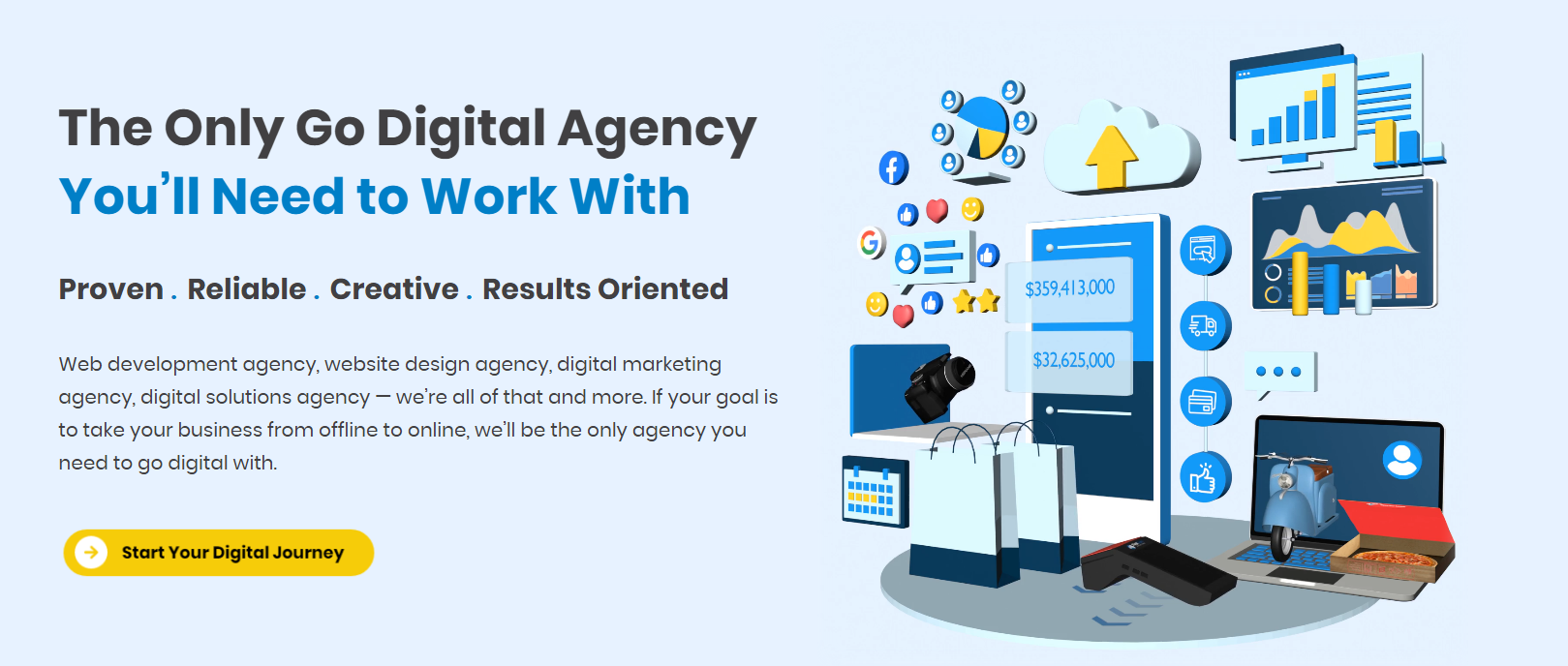
SINGAPORE – No brand or business these days is complete without a website and social media presence. However, first-timers can easily be overwhelmed with the sheer amount of information to consider when building a website.
If this sounds like you, we have you covered. Whether you’re looking to develop an online presence for your small business, or create an online store — this article will give you a step-by-step overview of what to consider when developing your own business website in Singapore.
|
Create Your Own Business Website in Singapore |
Website Name
The first thing you need to decide on is your website and domain name. These represent your business and enable customers to find you on the internet. Here are some tips to help you come up with a great website name:
Memorable
Choose a unique name that is suited to or represents your business. It can be tempting to be overly creative, but this might do the opposite of what you want and become hard to remember. Try not to use hyphens, numbers, or other special characters – especially since these can be confusing to type into the URL.
You can use free name generators like Namelix for inspiration.
Brief
Keep your name brief. This will help ensure that your name is easy to remember and search for. Impressions and memorability are everything, especially when you are counting on users to come back to your site or share it with others. Long names are more likely to be mistyped or misremembered, which could keep people from finding you.
Available
After coming up with a name for your website, you need to check if it is available. You can check if your chosen name is available using domain name checkers like CLDY or Who.is Checker. It’s a good idea to find out if the name you picked can be used early on in your web development process to avoid any delays or go through the hassle of having to change your collaterals and web design.
Check out this guide on choosing a good website domain name.
Web Hosting
Web hosting is what allows your website to be accessed online. Purchasing a web hosting plan means renting physical space on a server, which is where all of your site’s data gets stored and secured.
There are a wide range of types of web hosting services available with their own set of pros and cons depending on your needs. Prices for web hosting can vary from as low as SGD$5 per month for a small website with only a few pages, to as much as SGD$1000 per month for online stores with thousands of weekly visitors.
Shared Hosting
With a shared hosting plan, your website gets stored on the same server as other websites. All sites on this server share the same resources, making this a cost-effective option for small business owners, bloggers, or other beginner-level websites with relatively low traffic.
VPS Hosting
VPS or Virtual Private Server hosting is similar to shared hosting in that several websites use the same server, but the number of clients sharing the server are limited. Each client is given their own virtual partition, meaning each website gets an allocated amount of resources so that traffic from other websites on your server don’t interfere with your operations. VPS hosting is a good entry to mid-level option for medium-sized businesses, online stores, or popular blogs.
Cloud Hosting
Unlike server hosting, cloud hosting spreads your data over a cluster of web servers instead of a single server. This means that if one server experiences any issues, the other servers step in to help – making it a scalable solution that’s more reliable at handling load and more secure. This is a good option for high-traffic sites such as eCommerce platforms, or growing businesses that want something scalable and flexible enough to keep up as their website grows.
Managed Hosting
Managed hosting is run by companies that also own the servers and provide technical support, such as WordPress, which even offers its own website builder. This type of hosting is good for those that aren’t as technologically savvy since providers handle the management, operation, and customer support of their servers.
Dedicated Hosting
Dedicated servers are one of the most expensive options because you get an entire server just for your website. This gives you full reign over the capabilities of the server, and is the best option for large businesses with high traffic ranging in the thousands each week. Hosting services at this level come with plenty of technical support, and you’re paying for the reliability and ability to handle high loads without crashing.
The user interface and experience affects how visitors will feel about your website.
User Interface and User Experience (UI/UX)
UI and UX are so important that they have grown into fields of their own. UI refers to the graphic elements and layout, while UX is about the user’s overall experience. Both are equally essential to a successful website.
Keep these tips in mind when designing your UI/UX.
Mobile-friendliness
In Singapore, mobile phones account for 54% of web traffic, with 91% Singaporean internet users having used some kind of mobile phone to access the internet. This is why optimizing your mobile site, and not just your desktop website, is critical. Make sure that your website is well-designed, runs smoothly and loads quickly on mobile phones.
Home Page
Your home page is the first thing users will see and interact with when they visit your site. Ensure that everything is thoughtfully laid out, make good use of CTA (call-to-action) buttons, invest in a good photographer or graphic designer for your visuals, and keep your text concise.
Navigation
Having a clear and easy way for visitors to access different pages or functions on your website can be the deciding factor between someone making a purchase and someone leaving your page in frustration. The key to good website navigation is to make everything as clear as possible.
Include an easy-to-understand title for every page or service you offer – and don’t go overboard. Too many uncategorized pages can overload people with information. A classic, easy-to-find drop-down menu can be all you need.
Make your call-to-action buttons concise and prominent.
Call-to-Action (CTA) Buttons
CTA buttons are clickable elements that encourage people to take an action that would lead to goal conversion. For example, if you offer a subscription service, your CTA button might say “Subscribe Now.” If you offer consultations, your CTA could be “Contact Us” or “Find Out More.”
CTA buttons are quite versatile and can be placed (thoughtfully) throughout your website – such as beneath an introductory paragraph, or at the bottom of a page.
Link To Social Media
These days, having an active social media presence alongside your main website is a sign of trustworthiness and legitimacy. Your visitors might want to keep up with your brand through social media platforms rather than your website, so make sure you link to your social media via a social bar, dedicated sections on your landing page, or even simply at the very bottom of your website.
Content
Creating your own business website is one thing – now you need to fill it with content. This is vital, as your content should both represent your brand and introduce people to your offerings. Your content can also speak towards your brand ethos and your mission, vision, and values.
Pages
If you’re not sure where to start in terms of content, begin by creating the necessary pages:
- About Us – Where you can talk about who you are, how your brand started, and what sets your brand apart from the rest.
- FAQ – Where you can answer common questions about your product or service
Shop / Services – This is where your customers can go to browse what your business is offering. - Blog – Some businesses create blogs that can help showcase their offering or expertise through insights and relevant articles. This helps bring in traffic through search engines, attracting readers who may potentially buy or use your brand in the future.
- Contact Us – This page includes contact information customers can use to get in touch with your business. At the bare minimum, you should display your mobile number, email, and location. You can also explore having a short contact form that makes it easy for your customers to leave their details like what we’ve done on our contact us page.
Visuals
SMEs need to work harder to prove themselves to customers. In terms of good design, you need to consider more than just the layout of your page. Your visuals can make or break your branding. Low-quality images are a huge no-no that can damage how others view your business. The same goes for any graphic design elements on your page. Bottom line – don’t scrimp on your visuals!
Writing
Just like your visuals – bad writing can detract from the authoritativeness and legitimacy of your brand, which can negatively affect your numbers as a small business. Good websites have good writing. This doesn’t need to be anything fancy, but impressions do matter. Users will look to your words to learn about your business, so use free tools like Grammarly to ensure your copy is well written and error-free.
Social Proof
Shopping for products or services online can be tricky since customers can’t see or test your offering themselves. Instead, online shoppers tend to look to reviews and testimonials to check for quality. The term for this is social proof. When developing a website for small businesses, consider adding a testimonial page dedicated to showing off your social proof. This includes customer reviews (you can link them from Google) or quotes from satisfied clients.
Search Engine Optimisation (SEO)
Search engine optimisation is what allows your website to be easily found through organic searches. For example, your business sells refurbished furniture. A potential customer might google “refurbished furniture” in order to find relevant services. If your website has good SEO for “refurbished furniture”, your business will rank higher and appear within the top few search results.
Since SEO is a long-term strategy that takes time to see results, you want to get started early and build your website with SEO in mind.
Keywords
Determining relevant keywords to your business is the very first thing you should do when building your SEO strategy. With the example above, relevant keywords could include “refurbished furniture”, “antiques”, “refurbished bunk bed” or “furniture restoration.” Once you have done keyword research, you can use these keywords naturally throughout your site to help boost rankings.
Web Copy
Your keywords should be used often throughout your web copy, but this must not impinge on the quality of your writing. Web copy that is well-written reads naturally while still containing important keywords that help boost your search engine rankings.
Meta descriptions give searchers more information about your webpage.
Meta Descriptions
Meta descriptions are short summaries of your content that go underneath the title of your page in search results. In other words, your meta description is what people will read to see if your website contains relevant information worth clicking on. Ensure every page on your website has meta descriptions and make sure they contain your keywords to boost ranking and click-through rates.
Marketing
Last, but not least, make sure to take advantage of all available channels to market your website. Designing a great website is essential to the success of your business, but how will people get to experience your well-designed site if they don’t know about it?
There are several avenues you can take to get the word out. They include email newsletters, boosted ads on social media, and even banner ads on relevant websites.
Likewise, don’t forget to utilize web analytics. This will show you which of your marketing efforts has paid off, where most of your traffic comes from so that you can maximize that channel, and improve weaker areas.
Conclusion
There are many components you need to consider in order to create a successful business website. You might want to consider signing up for a web design course to learn more in-depth about web design. This list of basic must-haves is a great jumping-off point to get you started. Make sure to take time with each – trust us, consistent quality pays off.
If you’re worried about handling all of this on your own – you don’t have to! FirstCom Solutions offers a range of web design and development services. Speak to a consultant about designing and building a quality website for your business.




